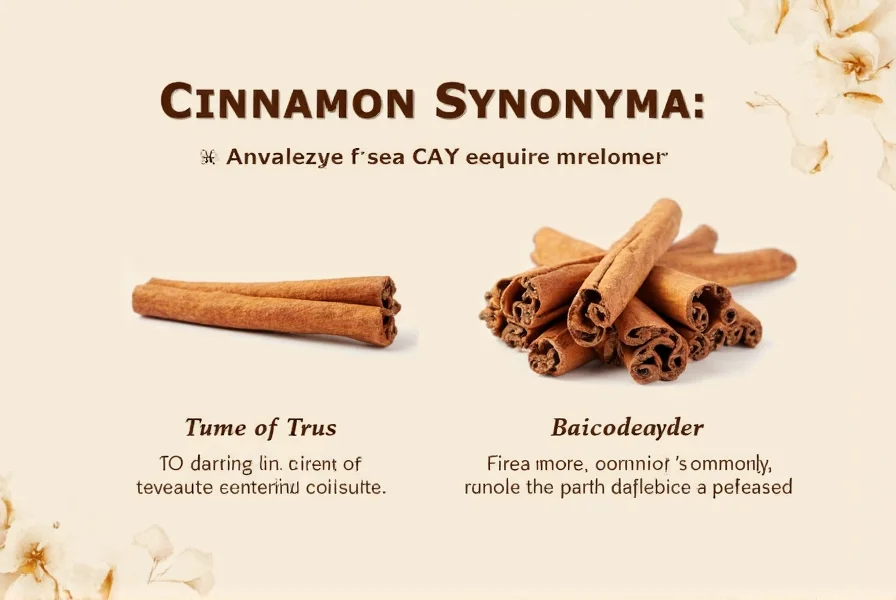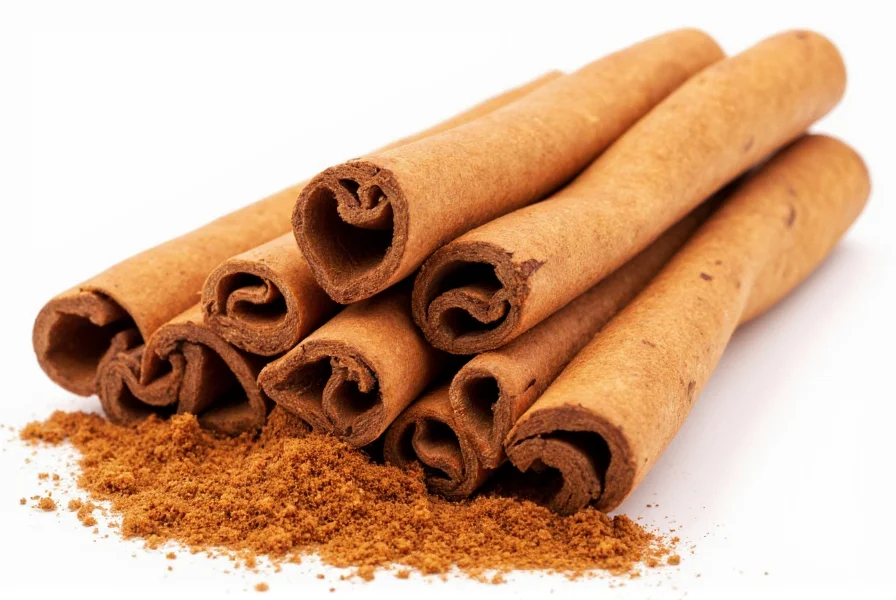When exploring cinnamon synonym terminology, it's crucial to understand that cinnamon itself isn't interchangeable with other terms in the strict linguistic sense. This common kitchen spice represents a precise botanical category, yet widespread confusion exists about alternative names and related varieties. Let's clarify the accurate terminology surrounding this popular spice.
Botanical Identity of Cinnamon
The term cinnamon specifically refers to the inner bark of trees from the Cinnamomum genus. True cinnamon, scientifically known as Cinnamomum verum (formerly Cinnamomum zeylanicum), originates from Sri Lanka and southern India. This species produces the delicate, tightly-rolled quills often labeled as "Ceylon cinnamon" in specialty markets.

Commonly Confused Cinnamon Varieties
What many consumers purchase as "cinnamon" is actually cassia, derived from Cinnamomum cassia trees primarily grown in China and Indonesia. While both belong to the same botanical family, they differ significantly:
| Characteristic | Ceylon Cinnamon | Cassia Cinnamon |
|---|---|---|
| Scientific Name | Cinnamomum verum | Cinnamomum cassia |
| Origin | Sri Lanka, India | China, Indonesia |
| Quill Structure | Multiple thin layers, soft | Single thick layer, hard |
| Coumarin Content | Very low (safe for regular consumption) | High (potential health concerns) |
| Flavor Profile | Delicate, sweet, complex | Strong, pungent, slightly bitter |
Terms Mistakenly Used as Cinnamon Synonyms
Several terms frequently appear in cinnamon alternative names discussions, though none qualify as true synonyms:
- Cassia - Often sold as "cinnamon" but represents a different species with higher coumarin levels
- Chinese cinnamon - Refers specifically to cassia (Cinnamomum cassia)
- Spice cinnamon - Marketing term without botanical meaning
- Cinnamon bark - Redundant term since cinnamon is defined as the bark
- Cinnamom - Incorrect spelling sometimes used online
Scientific and Culinary Terminology
Understanding cinnamon spice terminology requires distinguishing between:
Botanical classification: The Cinnamomum genus contains approximately 250 species, but only a few produce commercially viable bark. C. verum (Ceylon), C. cassia, C. loureiroi (Saigon cinnamon), and C. burmannii (Indonesian cinnamon) represent the primary commercial varieties.
Culinary context: In European and American markets, "cinnamon" typically means cassia due to its stronger flavor and lower cost, while specialty retailers distinguish Ceylon cinnamon vs cassia for discerning customers. This commercial labeling practice contributes significantly to what is another word for cinnamon confusion.
When Precise Terminology Matters
Accurate identification becomes critical in specific situations:
- Health considerations: Cassia contains 60-120 times more coumarin than Ceylon cinnamon, posing risks for those with liver conditions or on blood thinners
- Culinary applications: Baking often benefits from cassia's robust flavor, while delicate desserts showcase Ceylon's nuanced profile
- Allergen labeling: Precise identification matters for individuals with specific spice allergies
- Traditional medicine: Ayurvedic and traditional Chinese medicine prescribe specific Cinnamomum species for different treatments
For researchers investigating cinnamon botanical name variations, the International Code of Nomenclature for algae, fungi, and plants provides definitive classification. The shift from Cinnamomum zeylanicum to Cinnamomum verum reflects updated taxonomic understanding rather than synonymy.

Navigating Labeling Confusion
When shopping for cinnamon products, look for specific labeling:
- "Ceylon cinnamon" or "Cinnamomum verum" indicates true cinnamon
- "Cassia," "Chinese cinnamon," or simply "cinnamon" typically means C. cassia
- "Saigon cinnamon" refers to C. loureiroi with particularly high oil content
- "Korintje" specifies C. burmannii from Indonesia
Understanding these distinctions helps clarify the persistent cinnamon synonym confusion while ensuring you select the appropriate variety for your needs. The terminology matters most when health considerations or precise flavor profiles are essential to your application.










 浙公网安备
33010002000092号
浙公网安备
33010002000092号 浙B2-20120091-4
浙B2-20120091-4